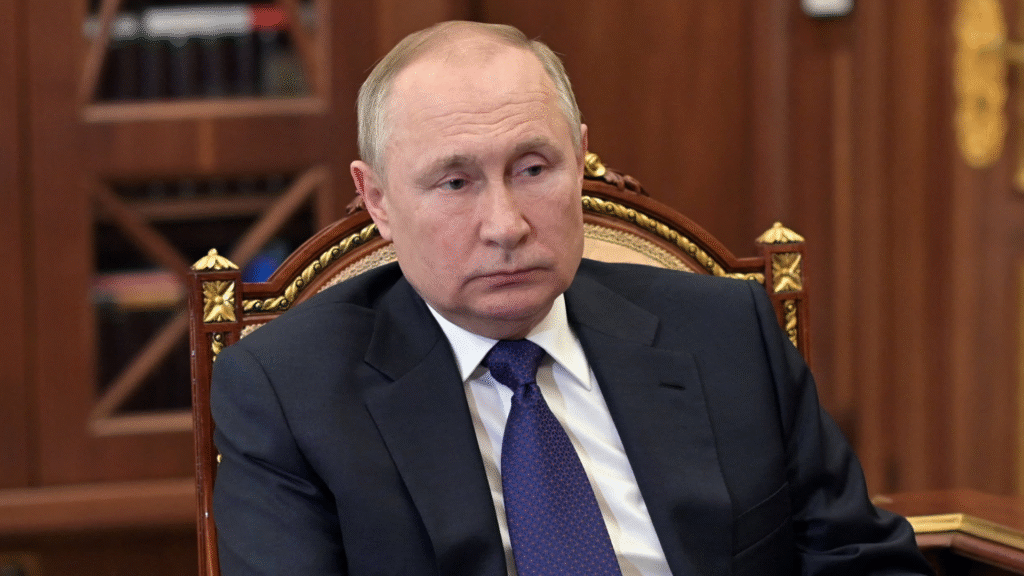
Ukraine launched a large-scale drone assault aimed at downing a helicopter and assassinate Russian President Vladimir Putin during a covert visit to the Kursk region on May 20, according to reports from Russian military officials and the Associated Press.
The dramatic incident, which was only confirmed after Putin had safely returned from the front-line area, underscores the increasing boldness of Ukrainian tactics and the potential for the war to spill deeper into Russian territory. Kursk, which borders Ukraine and has seen active fighting, has been under Russian control since August.
Russian Air Force Major-General Yuri Dashkin revealed that Putin’s helicopter came dangerously close to being caught in the crossfire of what he called an “unprecedented” drone attack by Ukrainian forces.
According to Dashkin, 46 aircraft-type drones were launched by Ukraine in an attempt to strike Russian targets in the area—including, it appears, the aircraft carrying the Russian president.
“During the period when the President was working in the Kursk region, the enemy launched an unprecedented attack with unmanned aerial vehicles,” Dashkin said. “The air defense group in this area destroyed 46 aircraft-type drones.”
The attack reportedly intensified at the very moment Putin’s helicopter was flying over the area, indicating that Ukrainian forces may have had real-time intelligence on his movements. “The intensity of the attack during the flight of the Supreme Commander-in-Chief’s aircraft over Kursk region increased significantly,” Dashkin said. “We simultaneously conducted an air battle and ensured the safety of the presidential helicopter in the air. The task was accomplished.”
The Kremlin has not commented on whether Putin’s aircraft was specifically targeted, but the timing of the attack and its proximity to his flight path raise serious questions about Ukrainian operational capabilities and potential security lapses on the Russian side.
Notably, Putin’s visit to the region was not publicized until after his return, likely as a precautionary measure to avoid tipping off Ukrainian intelligence—a move that, in hindsight, may have come too late.
The Russian president has generally avoided visiting front-line zones since the war began over three years ago, making this appearance both symbolically important and unusually risky. That Ukraine was seemingly aware of his location has added to the Kremlin’s concerns about internal leaks or external surveillance.
According to Russia’s Defense Ministry, Russian forces have since made gains in the border region. Yaroslav Yakimkin, a senior officer in Russia’s “North” military group, claimed on Sunday that Ukrainian forces have been pushed back from parts of the Kursk border and surrounding areas.
“Our troops continue to advance every day,” Yakimkin said, asserting that Russian forces had taken control of the settlements of Marine and Loknya in Ukraine’s Sumy region, as well as making advances in the Kharkiv region near the devastated town of Vovchansk.
This attempted strike on Putin could mark a turning point in the conflict, as Ukraine increasingly pushes the war across the border into Russian territory—a development with dangerous implications for regional stability.

